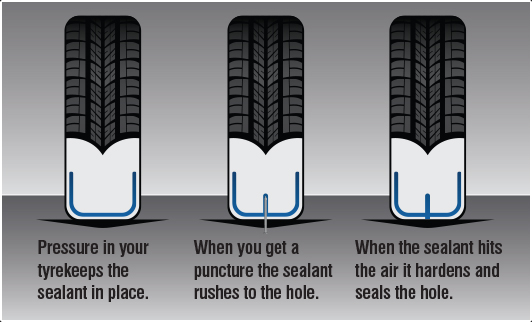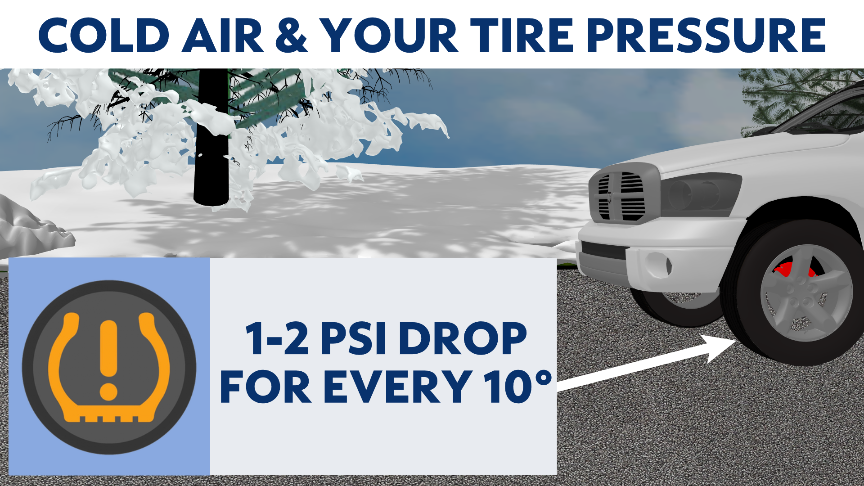How to Keep Tires from Losing Air in Cold Weather
To prevent tires from losing air in cold weather, regularly check and maintain proper tire pressure. As temperatures drop, tire pressure can decrease, leading to underinflated tires.
Low tire pressure can affect your vehicle’s performance and fuel efficiency. To keep tires properly inflated during cold weather, check tire pressure frequently and inflate them to the manufacturer’s recommended levels. Additionally, ensure valves and seals are in good condition to prevent air leaks.
Parking in a garage or using tire covers can also help maintain tire pressure in chilly conditions. By taking these steps, you can keep your tires at the correct pressure and ensure safety and efficiency during cold weather driving.

Credit: vsyamebel.shop
Why Tires Lose Air In Cold Weather
When the temperature drops, you may notice your tires losing air. But why does this happen? Let’s explore the reasons behind this phenomenon so that you can take proactive measures to keep your tires properly inflated during the cold winter months.
Expansion And Contraction Of Air
In cold weather, the air inside the tire contracts, leading to a decrease in pressure. As the temperature drops, the air molecules lose their kinetic energy, causing them to move closer together, which results in a reduction of tire pressure.
Effect Of Temperature On Tire Pressure
Temperature greatly influences tire pressure. For every 10-degree Fahrenheit drop in temperature, your tire’s air pressure can decrease by about 1-2 pounds per square inch (psi). This change is significant and can lead to underinflated tires, impacting your vehicle’s handling and fuel efficiency.

Credit: www.utires.com
Regular Tire Maintenance
Proper tire maintenance is crucial in preventing air loss during cold weather. Ensure your tires are properly inflated, check them regularly, and store them in a cool, dry place to minimize air pressure fluctuations.
Check Tire Pressure Regularly
Keep an eye on tire pressure as it fluctuates with temperature changes. Regular inspections can catch issues early.Keep Tires Properly Inflated
Maintain proper inflation levels to avoid premature wear and tear. Under-inflated tires are prone to air loss in cold weather.Using Nitrogen To Inflate Tires
Using Nitrogen to Inflate Tires helps in preventing air loss in cold weather.
Benefits Of Nitrogen
- Reduces tire pressure loss in cold temperatures
- Improves fuel efficiency and tire lifespan
- Provides more stable tire pressure
Where To Find Nitrogen Service
- Local auto shops and tire service centers
- Gas stations with nitrogen filling stations
- Tire dealerships offering nitrogen inflation

Credit: spectrumnews1.com
Protecting Tires From Extreme Cold
Protecting your tires from extreme cold is crucial to maintaining optimal tire pressure during the winter months. Cold temperatures can cause the air inside tires to contract, leading to underinflation and compromised driving performance. Here are some effective ways to protect your tires from extreme cold.
Park Indoors Whenever Possible
Parking your vehicle indoors during cold weather helps to protect your tires from direct exposure to freezing temperatures. Indoor parking shelters tires from the extreme cold, preventing rapid air contraction and maintaining optimal pressure. If indoor parking is not feasible, consider using a car cover to provide some level of protection against the cold weather.
Use Tire Covers Or Wraps
Tire covers or wraps are effective in insulating tires from the extreme cold. They provide an additional layer of protection against temperature fluctuations and help maintain tire pressure. Investing in high-quality tire covers can prevent air loss due to cold weather, ensuring that your tires remain properly inflated for safe driving in winter conditions.
Tips For Safe Winter Driving
To keep your tires from losing air in cold weather, ensure they are properly inflated before the temperature drops. Periodically check the tire pressure and fill them to the recommended level. Park in a garage or use tire covers to shield them from extreme cold.
This will help maintain optimal tire pressure for safe winter driving.
Winter weather can create challenging driving conditions, especially when it comes to your tires. Cold temperatures can cause tires to lose air pressure, which can affect their performance and safety. To ensure you’re driving safely this winter, here are some tips to keep your tires from losing air in cold weather.
Check Tire Tread Depth
When it comes to winter driving, having proper tire tread depth is crucial for maintaining traction on slippery roads. A simple way to check your tire tread depth is by using the penny test. Place a penny upside down into several tread grooves across your tire. If you can see the top of Lincoln’s head, it’s time to replace your tires. Having adequate tread depth will not only improve your tire’s grip on the road but also help prevent them from losing air.
Consider Winter Tires
If you live in an area with heavy snowfall and icy road conditions, it’s worth considering investing in winter tires. Winter tires are specially designed to provide superior traction in cold weather. Their unique rubber compound stays flexible even in freezing temperatures, ensuring better grip and stability. Winter tires also have deeper tread patterns that help to channel snow and slush away from the tire, minimizing the risk of hydroplaning. By using winter tires, you can help reduce the chances of your tires losing air pressure during the winter months.
Frequently Asked Questions Of How To Keep Tires From Losing Air In Cold Weather
Should You Put Air In Your Tires When It’s Cold?
Yes, it’s recommended to put air in your tires when it’s cold to maintain proper tire pressure.
Is It Normal For Tires To Lose Pressure In Cold Weather?
Yes, it’s normal for tires to lose pressure in cold weather due to decreased tire elasticity. Adjust pressure accordingly.
How Do You Fix A Tire That Keeps Losing Air?
To fix a tire losing air, first, check for any visible punctures or damage. If none found, inspect the valve stem and tighten it if needed. If the problem persists, the tire may have a leak and should be inspected and repaired by a professional.
Regularly maintaining tire pressure is crucial.
Will Tire Pressure Go Back To Normal When It Warms Up?
Tire pressure can increase as it warms up due to air expansion.
Why Do Tires Lose Air In Cold Weather?
Cold weather causes the air inside tires to contract, leading to a decrease in tire pressure.
How Often Should I Check My Tire Pressure In Winter?
It is recommended to check tire pressure at least once a month during the winter months.
What Is The Ideal Tire Pressure For Cold Weather?
The ideal tire pressure for cold weather can be found in your vehicle’s manual or on a sticker located inside the driver’s door.
Conclusion
Keeping your tires properly inflated during cold weather is crucial for maintaining optimal performance and safety. By following the tips and techniques discussed you can ensure that your tires retain air pressure and stay in top condition, even in the harshest winter conditions.
Proper tire maintenance will not only extend the life of your tires but also enhance the overall driving experience.
